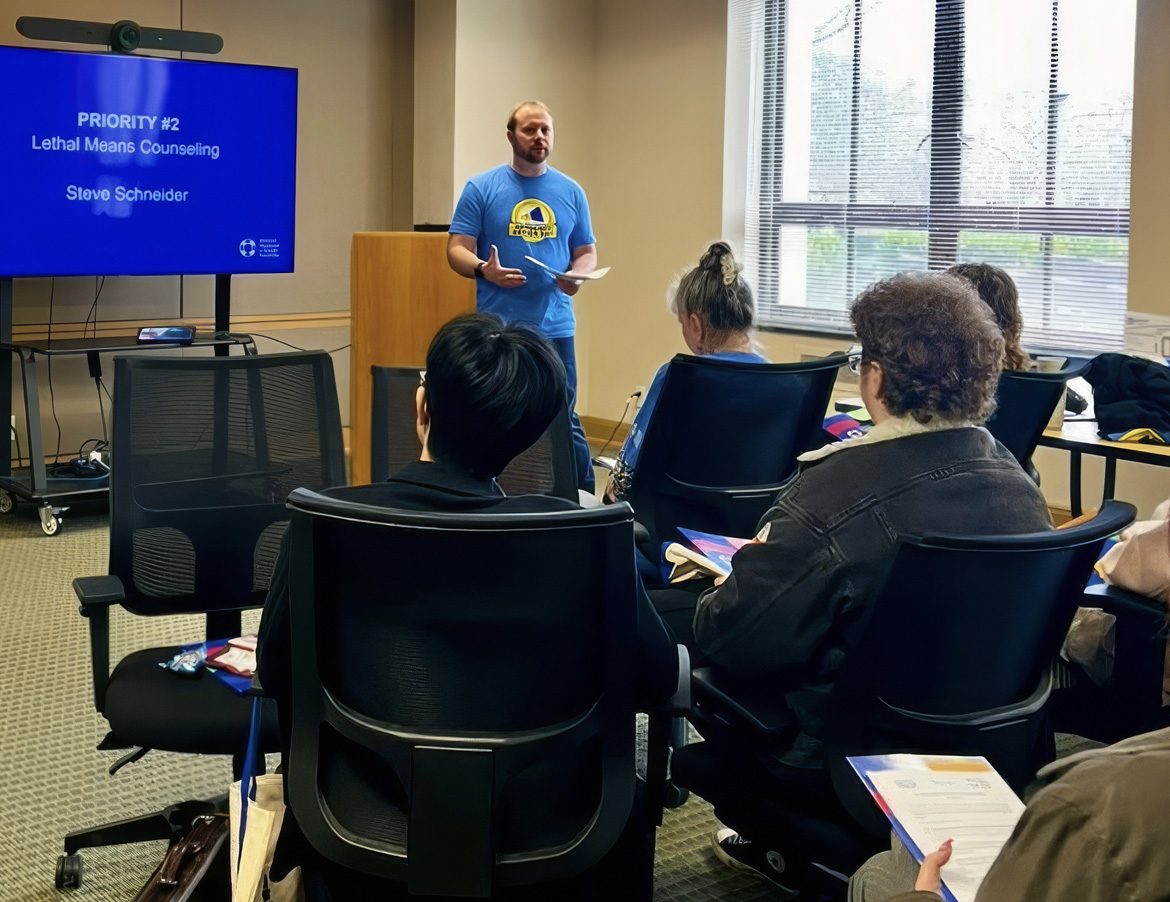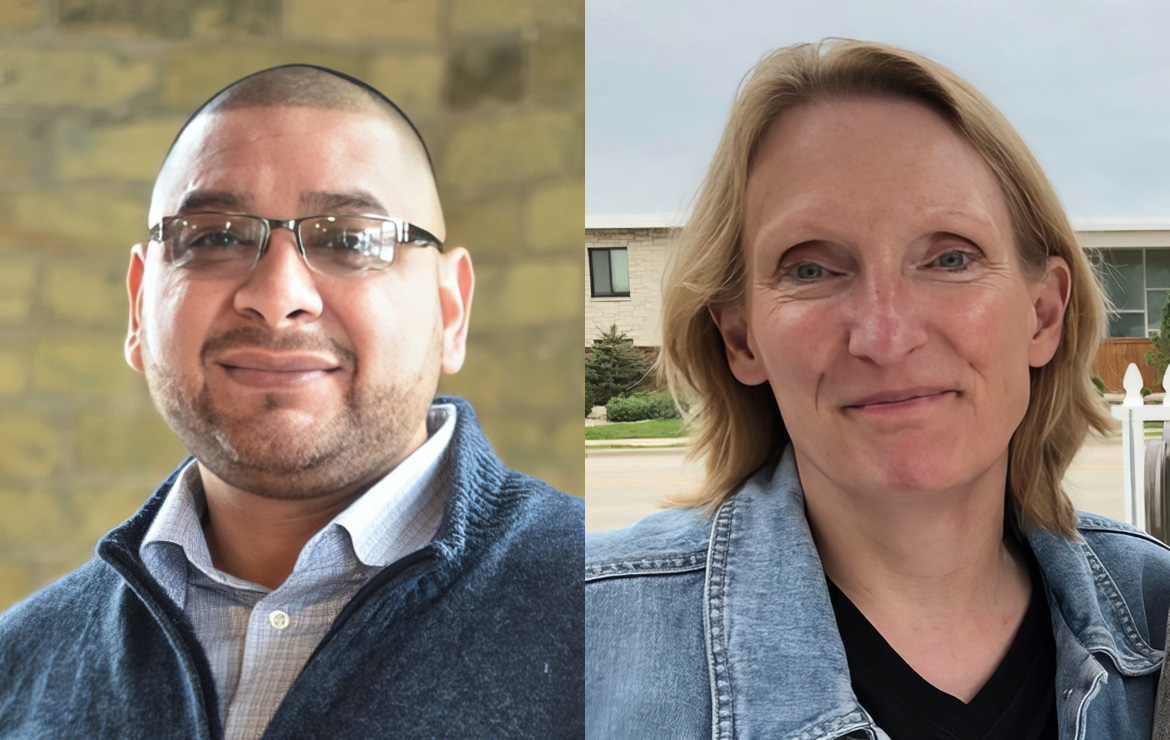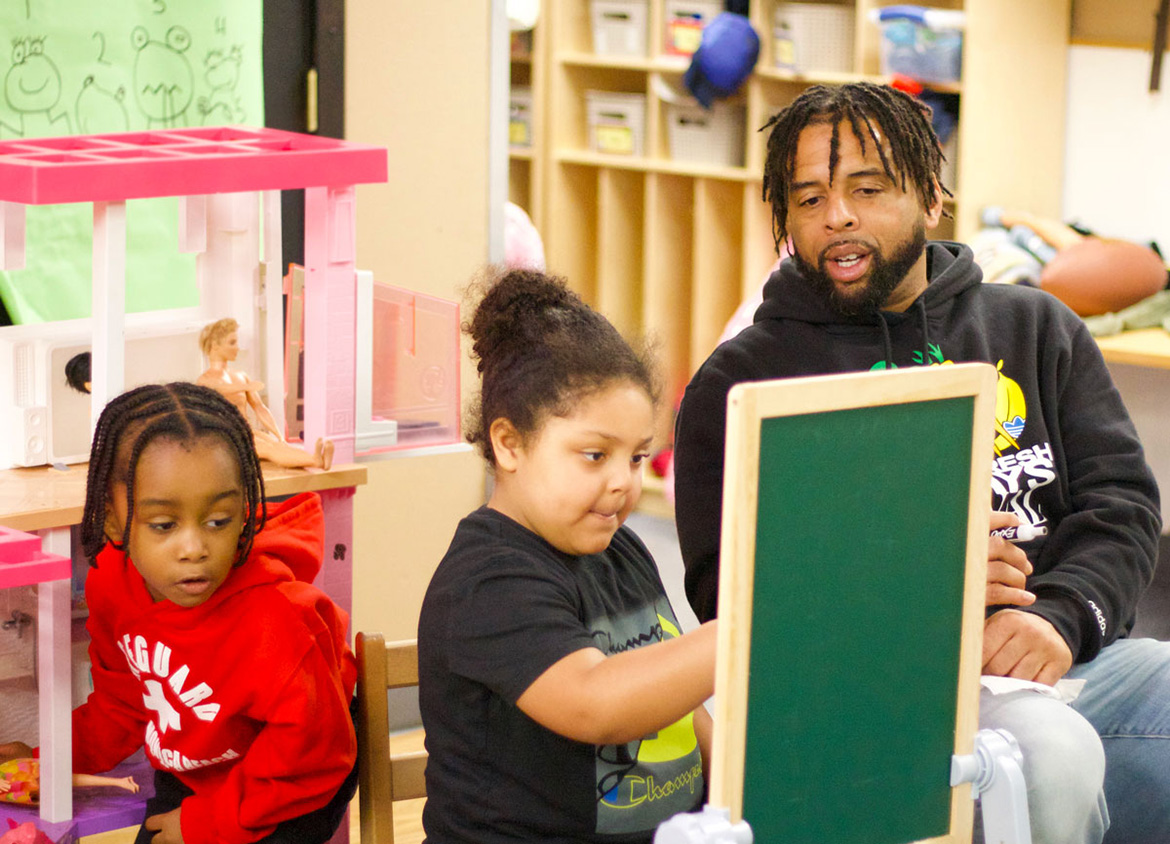
Hello friends and colleagues!
Thank you for being a partner to Roots & Wings on this journey to help children grow strong from the roots up. We are happy to connect with you through this newsletter and share some of the things we are doing and learning.
It goes without saying that this is a disconcerting time for the world — a time that feels particularly threatening to anyone who lacks resources, voice, and power. Everywhere we turn, programs and policies which once seemed stable are under threat or being eliminated outright. Low-income families and children nationwide are more vulnerable than ever. And the philanthropic sector is scrambling to backfill while public services are dismantled, leaving dangerous gaps in our social safety net.
The Roots & Wings team is moving quickly to meet this unprecedented moment as best we can. In some cases that means speeding up payouts on existing grant commitments to put critical resources into the hands of communities in need. In other cases, it is about listening to the new challenges our partners are facing and sharing resources about how others are responding to these challenges.
In a time of deep fear and confusion, one thing remains certain: Roots & Wings is not going anywhere. We will not waiver in our support for partners, and we will continue looking for ways to provide other forms of support “beyond the check” during the coming months.
One such support we recently began providing for partners is a communications-focused technical assistance program called BRIDGE. Designed and led by Lightful, BRIDGE uses a combination of classes, one-on-one coaching, and web-based tools to help nonprofits enhance their storytelling skills and digital capabilities to make their organizations more resilient and connected. We’re proud to have welcomed more than 50 partners into an inaugural learning cohort. If the pilot goes well, we hope to make it available to even more of our grantee partners in the future.
After five years of grantmaking, Roots & Wings now has more than 300 partners in all, including 28 organizations added in 2024 alone. In order to focus on supporting these partners as deeply as possible – especially during such turbulent times – we will not be investing in many new partners during 2025. Instead, we hope to spend more time in the field, on site visits, assisting with collaborations, and deepening the communities of practice that make your work so impactful.
Speaking of collaborations, I hope you will take time to read our story about the Wisconsin Impact Network, a learning cohort we helped establish with some of the remarkable partners in our Safety & Justice program. We’ve also included an inspiring story about All Secure Oregon, an initiative to reduce firearm suicides by building trust in rural communities and training healthcare providers for potentially life-saving conversations about firearm safety with patients and their families.
Finally, we are excited to share this story published in Forbes in October 2024. While Roots & Wings generally prefers to work quietly behind the scenes, we hope this article will encourage existing foundations and emerging donors alike to increase their giving and embrace trust-based philanthropy principles.
Thank you for all you’re doing to make the world a safer, healthier place for children and families.
With gratitude,
Shana

Rural Communities Are Key to Oregon’s Innovative Approach to Preventing Firearm Suicide

In a state where firearm dealers outnumber McDonald’s and Starbucks locations combined, the Alliance for a Safe Oregon is taking an innovative approach to preventing firearm-related tragedies. Through their All Secure Oregon initiative, the innovative nonprofit is working to reduce firearm suicides by building trust in rural communities and training healthcare providers to have potentially life-saving conversations about gun safety with patients and their families.
The stakes are high. Each year, approximately 500 Oregonians die by firearm suicide, with the state’s rate significantly exceeding the national average. In rural areas, the crisis is particularly acute, with firearm suicide rates running three times higher in the most rural areas of Oregon, and with Veteran suicide rates 1.5 times higher than the national average, which is already double civilian suicide rates.
“We started by working to really understand who is most affected in Oregon. Eighty percent of our gun deaths are suicides,” explains executive director Jess Marks. “Oregon has really high youth suicide rates, really high Veteran suicide rates, and we are losing a lot of folks in our rural communities.”

Alliance for a Safe Oregon executive directer Jess Marks (left) and Firearm Suicide Program Manager Steve Schneider (right)
The organization’s approach represents a significant shift in how gun safety organizations engage with communities, an effort to move beyond political divisions and reductive “pro-gun” versus “anti-gun” thinking that has long forestalled collaboration around shared goals. To wit, the organization recently changed its name from The Alliance for Gun Safety to Alliance for a Safe Oregon, a clear signaling of their desire to focus on practical solutions that can save lives.
“The term ‘gun safety’ didn’t align with the outcome we are trying to achieve,” Marks explains. “Our end goal wasn’t primarily around gun safety. Our end goal is to save lives, and help build safer communities where people aren’t dying by suicide, and where kids feel safe.”
The name change has opened doors in communities that might have previously been hesitant to engage. Steve Schneider, who manages the All Secure Oregon project, has found success building partnerships in unexpected places, including with gun shop owners who were initially distrustful of the Alliance’s motives.
“We have partnered with folks who initially viewed us with deep skepticism, and who now realize that we have shared goals that have nothing to do with politics and everything to do with practical measures to keep people safe from harm,” says Schneider, whose background as a combat Veteran and lifelong gun owner helps him establish credibility in rural communities.
A key component of the initiative focuses on training primary care providers to discuss firearm safety with their patients. This strategy is based on research showing that while less than 25 percent of individuals who die by suicide had seen a mental health provider in the year before their death, 85 percent had visited a primary care provider.
However, many healthcare providers, particularly those from other countries, lack the cultural competency to have these crucial conversations. “In Roseburg, maybe half of the medical residents were from other countries,” Schneider notes. “They were living in fear because they’re like, ‘Wow, all my patients have guns, and we don’t know how to talk about it.’”
The organization’s training program helps healthcare providers understand gun culture, Oregon laws, and effective communication strategies. It also includes hands-on experience with secure storage devices and role-playing scenarios to build confidence in having these sensitive conversations.
To make secure storage more accessible, the Alliance distributes quick-access pistol safes to healthcare organizations for patients in need. This practical approach has shown promising results, particularly when combined with educational outreach.
“If we give out 15 safes, that’s potentially 15 lives or more that may be saved if they secure their firearms with them,” Schneider explains. “Every single day, I think we are making progress here and there, changing people’s minds and getting more people on board.”
The organization is also conducting focus groups with disproportionately affected populations, includingVeterans, tribal members, Spanish-speaking community members, white men over 65, and rural community members. These conversations have revealed important insights about how different communities view firearm ownership and safety.

Alliance for a Safe Oregon program manager Steve Schneider teaching a safety class.
“We recently conducted a focus group in Redmond with Spanish-speaking community members who own guns,” Schneider shares. “They were very excited to share their voices and opinions with us, and expressed that they often felt unheard and unseen here in Oregon.”
The organization’s approach appears to be gaining traction. They’ve trained over 120 medical professionals, including serving as a community-based subject matter expert on firearm safety for the VA health centers in Oregon to help providers better understand firearm and military cultural competency. A recent training session at a rural-serving community healthcare organization in Roseburg reached 24 family medicine residents and five staff members, with participants expressing particular appreciation for the cultural context provided.
Looking ahead, the Alliance hopes their community-based approach can serve as a model for other states. “If we can actually show it’s effective, and have that coming from gun owners themselves, who are saying they want that, rather than it being another thing that folks are putting on them, I think it’ll lead to much longer-term system-level change,” Marks says.
The work reflects a growing recognition that addressing firearm suicide requires moving beyond political divisions to find practical solutions that communities can embrace. While the challenge remains enormous — Oregon has one of the highest rates of firearm ownership in the country — the Alliance’s success in building bridges with rural communities and healthcare providers offers hope for reducing these preventable tragedies.
“In a national space where it feels like there is no movement,” Marks reflects, “when you have conversations in community, they are very different than what the conversation is at a political level or how people vote, or how elected officials represent folks in those communities.”
To learn more about how advocates in Oregon are engaging firearm owners and rural communities to prevent tragedies, check out this recent feature story from The Chronicle of Philanthropy: Are Nonprofit ‘Trusted Messengers’ More Important Than Ever? A Report From Rural America
In a time of increasing polarization and competition for resources, several dozen Wisconsin nonprofits are demonstrating a different way forward. Through the Wisconsin Impact Network (WIN), organizations working on justice reform, violence prevention, and community safety are setting aside traditional rivalries to build deeper collaboration and trust.
The network, which began meeting two years ago, brings together organizations that might typically view each other as competitors for limited funding. Instead, they’re discovering the power of working collectively to address complex community challenges.
“It feels like another family,” says Ruben Gaona, executive director of My Way Out, a Milwaukee-based organization supporting formerly incarcerated individuals. “When you’re in family, you have brothers, sisters, uncles all over. But when you do a family gathering, everybody gets together. That’s how this is — we all get to gather as family, and we are able to help one another meet our missions and visions.”
Linda Ketcham, executive director of Just Dane in Madison, echoes this sentiment. With 19 years leading her organization, she’s seen many attempted collaborations come and go. But WIN feels different.
“It alleviates that sense of competition that we often get when we’re sitting in meetings, applying for grants, being evaluated,” Ketcham explains. “You’re worried about talking too much about what you’re doing because maybe it’s going to impact future funding. This takes that out of the space, because we’re not competing.”

My Way Out Executive Director Ruben Gaona (left) and Just Dane Executive Director Linda Ketchum (right)
The network was initiated by Roots & Wings, which funds the participating organizations mainly through its Safety & Justice portfolio. But rather than dictating the structure or outcomes, the foundation asked members what they wanted a collaboration to be and then supported them in creating it.
“We heard from partners the desire to connect with their peers, so we offered an opportunity for this connection,” said Courtney Jiles, Roots & Wings Safety & Justice program manager. “I never imagined how far this group would come in just two years. The relationships and trust they’ve built and their commitment to each other have been remarkable. This is one of the pieces of work at the foundation that I’m most proud of.”
The foundation’s approach reflects what Ketcham describes as “trauma-informed philanthropy,” a rarity in her 44-year nonprofit career. “Roots & Wings might be one of maybe two or three foundations in my professional career that actually approach philanthropy in a trauma-informed, person-centered way,” she notes.
The impact of this trust-based approach is evident in how organizations are working together. Gaona describes how his organization has been able to partner with the ACLU to provide know-your-rights training at the Milwaukee County Reintegration Center — something neither organization could have accomplished alone.
“I don’t know if I would have ever been collaborating with ACLU, bringing them into the Milwaukee County Community Reintegration Center (CRC). They’ve never gotten in there before,” Gaona says. “If I’m already going there, why can’t I bring you about, invite you as a guest speaker? Now you’re opening doors, not only for yourself but for other people.”
The network is facilitated by Equity by Design, which has helped the group develop what they call “equity-centered group agreements.” These agreements provide protocols for addressing power dynamics, confronting biases, and making space for multiple truths and norms. Through exercises like asset mapping, organizations discover new possibilities for partnership and collaboration.
This structured approach to building trust and relationships has become even more vital given today’s challenging political climate. As Ketcham notes, “This space is going to, in some ways, become kind of sacred, because there won’t be a lot of safe places to do that and to share this. I think it becomes more important than it has been, to be honest.”
Gaona agrees, speaking to how the network provides crucial emotional support during difficult times. “I know that I’m not fighting this fight alone,” he says. “I feel safe that I’m with people that I can lean on and I could trust that can help me continue to push forward.”
The network has also changed how organizations approach funding opportunities. Rather than competing against each other for limited resources, members are looking for ways to collaborate on grants and share resources.
“Let’s not all fight for the same pot,” Gaona explains. “How can we all collaborate together? If one takes the lead, the others can be written in as subcontractors or partners, where we’re all able to get a piece of the pie.”
This shift in mindset — from competition to collaboration — is particularly crucial given the complex challenges these organizations face. Whether working to prevent gun violence, support returning citizens, or advocate for justice reform, no single organization can achieve lasting change alone.
“We don’t do this in a vacuum,” Ketcham emphasizes. She describes how the network has helped organizations identify and support partners who provide complementary services their participants desperately need.
After two years, what began as a foundation-initiated experiment has evolved into a vital support system for Wisconsin’s justice and safety-focused nonprofits. The relationships built through WIN are helping organizations weather current challenges while building toward longer-term systemic change.
As the network continues to evolve, its members are discovering that their collective impact far exceeds what any single organization could achieve alone. In a time of increasing division, WIN offers a powerful example of how intentional collaboration and trust-building can help organizations better serve their communities and advance their shared vision of a safer, more just Wisconsin.
We are excited to announce that we added 28 new partners in 2024! It is a privilege to able to support the work of this remarkable group of nonprofit organizations. We look forward to learning from all they are doing to help build community and advance the wellbeing of children and families — across Wisconsin and around the nation. Please join us in welcoming them!

Childcare Aware of Washington (image courtesy of Childcare Aware of Washington)
And finally, we wanted to share links to a few of the websites we are following as we monitor the steady stream of Executive actions and policies impacting the nonprofit sector and our grantee partners. If there are additional resources you recommend and would like to share with the Roots & Wings network, please reach out to your program manager and let them know.
The National Council of Nonprofits is the largest network of nonprofits in North America. To keep track of how the latest executive orders and other administration decisions are impacting the nonprofit sector, bookmark this page and check back regularly.
This Research Snapshot from CEP examines how nonprofits are experiencing the rapid shifts in policy and the current U.S. political climate under a new presidential administration. Drawing on responses from 585 nonprofit leaders collected in February 2025, the report highlights their most pressing concerns with the political climate and what they would find most helpful from their foundation funders.
A reliable source for reporting and opinion pieces on the second Trump administration by the top experts and thinkers in philanthropy. Track the latest stories here. We also encourage you to check out The Commons: Where A Divided America Comes Together. Launched by The Chronicle in April 2024, The Commons delivers rigorous reporting, resources and tools designed to highlight how foundations and nonprofits are working to close the country’s divides.
Updated daily, The Federal Register is the official daily publication of the U.S. Federal Government, serving as a public notification tool for changes to federal law, including proposed and final rules, notices, and presidential documents. You can track all of President Trump’s Executive Orders here.
